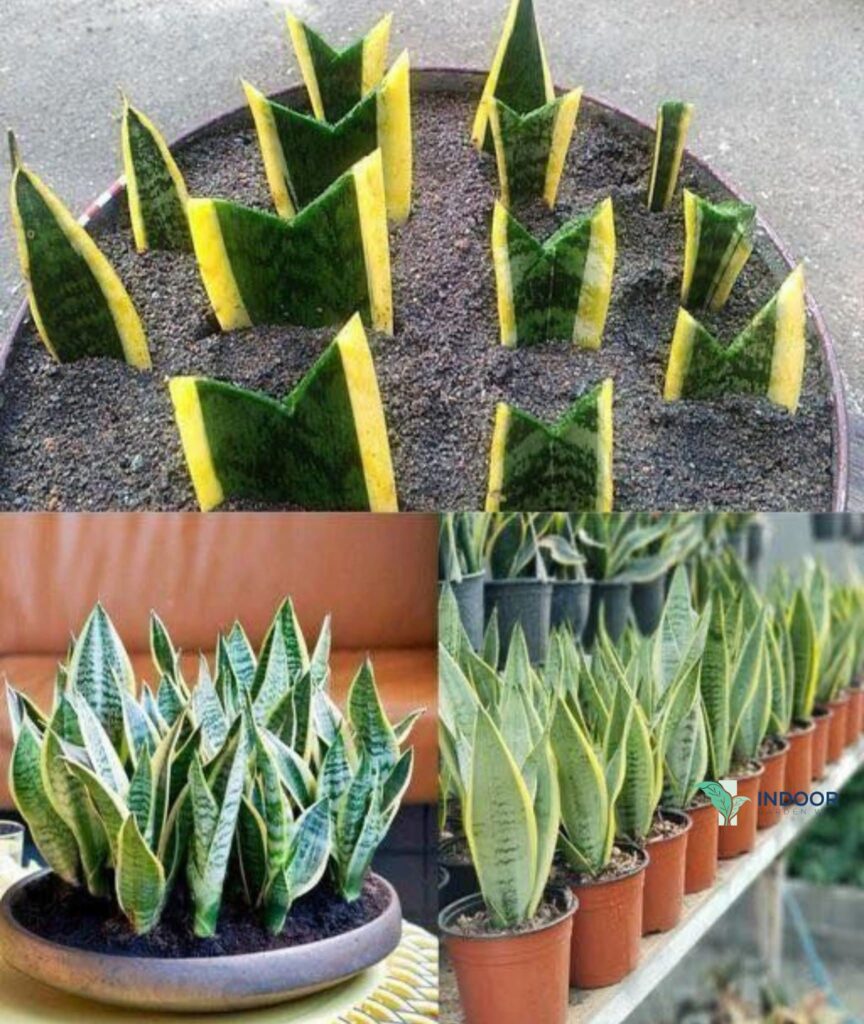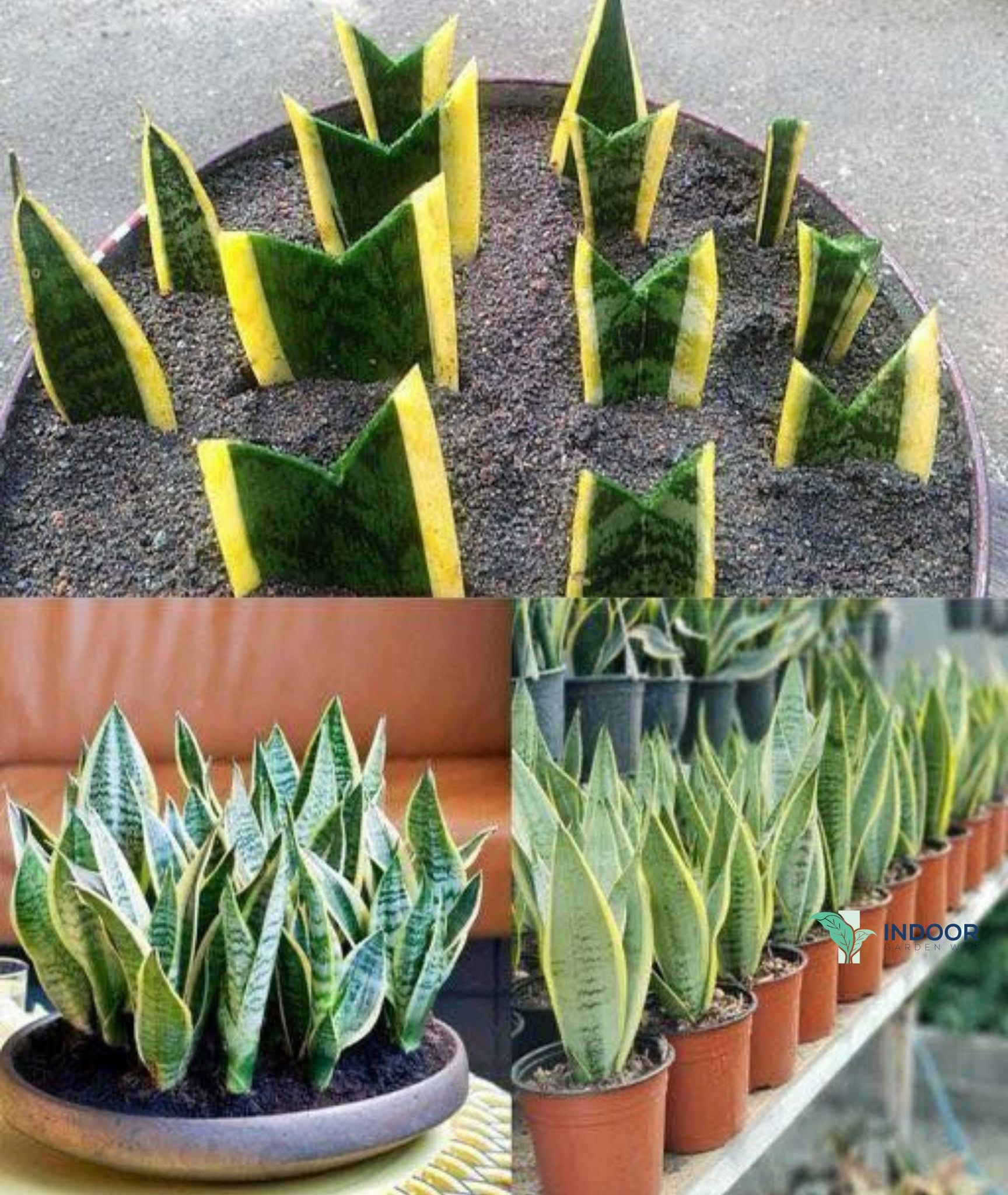
Give Snake plants (Sansevieria, also called Dracaena trifasciata) are one of the toughest and most rewarding houseplants you can grow. With their upright, sword-shaped leaves and their incredible tolerance for neglect, these plants are a favorite in homes, offices, and even bedrooms.
One of the best things about snake plants is their ability to multiply by producing “pups” (baby plants) right from their roots. Many people rely on store-bought fertilizers or expensive plant foods to push out new growth, but the truth is—you don’t need any of that. With the right conditions and a little understanding of how these plants work, you can grow endless snake plant pups naturally, for free, and forever.
Understanding Snake Plant Pups
Snake plants spread underground through rhizomes—thick, root-like stems that store water and nutrients. From these rhizomes, pups (tiny snake plants) sprout and grow alongside the mother plant. Once a pup develops its own roots and a few healthy leaves, you can separate it into its own pot and boom—you’ve got a brand-new plant.
Instead of chasing fertilizers, the real secret lies in creating the perfect environment for your plant to trigger pup production.
The Natural Triggers for More Snake Plant Pups
Here are the conditions snake plants love when it comes to multiplying:
1. Light Exposure
- Snake plants tolerate low light, but if you want more pups, give them bright, indirect sunlight.
- A sunny window (east or south-facing) is best.
- Too much direct sun may scorch leaves, but filtered light encourages rhizomes to “wake up” and produce new growth.
2. Pot Size & Root Bound Trick
- Snake plants actually enjoy being slightly root-bound. When their roots and rhizomes have limited space, they start sending out pups in search of more growing room.
- Use a pot that’s not overly large—this encourages multiplication instead of endless single leaf growth.
3. Soil Choice
- Forget heavy garden soil. Snake plants thrive in a well-draining mix (think cactus or succulent soil).
- Mixing potting soil with perlite, sand, or pumice keeps the roots healthy and prevents rot. Healthy rhizomes = more pups.
4. Watering Rhythm
- Overwatering is the #1 killer of snake plants.
- Water only when the soil is completely dry (every 2–3 weeks indoors, more often in summer).
- This mimics the plant’s native dry habitat and keeps rhizomes healthy enough to push new babies.
5. Temperature & Stress Factor
- Snake plants thrive at normal room temps (18–27°C / 65–80°F).
- A little stress—like keeping the plant slightly dry—can actually trigger it to reproduce more pups as a survival mechanism.
How to Multiply Snake Plants Naturally
There are two main ways to grow more pups without fertilizers:
1. Letting Mother Nature Do the Work
- Simply keep your snake plant in good light, don’t overwater, and wait.
- Within a few months, you’ll notice tiny leaves poking out from the soil—that’s a new pup!
- Once pups are at least 4–6 inches tall with roots of their own, gently separate them with a clean knife and pot them up.
2. Propagation by Division
If you want unlimited copies faster:
- Remove the entire plant from its pot.
- Look for clusters of rhizomes (they look like thick white roots).
- Cut sections of the rhizome that include at least 1–2 healthy leaves and some roots.
- Plant each section in its own pot.
- Water lightly and place in bright, indirect sunlight.
This method gives you instant new snake plants, not just pups waiting to grow.
Why Skip Fertilizers?
Fertilizers may give snake plants a short growth spurt, but they aren’t necessary for pup production. In fact:
- Snake plants are naturally slow growers—forcing them with heavy feeding can damage roots.
- They thrive in poor, sandy soils in the wild—proof that they don’t depend on fertilizers.
- Over-fertilizing can cause yellow leaves, soft rhizomes, and even plant death.
Instead of feeding fancy, focus on light, water, and soil—the natural trio that guarantees growth.
Benefits of Propagating Snake Plants Naturally
- Unlimited Free Plants – Keep multiplying and gifting them to friends and family.
- Better Air Quality – Snake plants are famous for filtering toxins like formaldehyde and benzene. More plants = cleaner air.
- Stress-Free Care – No need to worry about feeding schedules or expensive fertilizers.
- Sustainability – Natural propagation reduces waste and keeps gardening eco-friendly.
- Decor Upgrade – From one plant, you can fill your home with stylish pots of upright greenery.
Final Thoughts
Growing more snake plant pups isn’t about fancy fertilizers or chemical shortcuts—it’s about working with the plant’s natural survival instincts. Give them bright light, the right soil, controlled watering, and a snug pot, and they’ll reward you with endless little green soldiers.
Whether you’re after a mini jungle at home or want to share cuttings with friends, remember: once you understand how snake plants multiply, you’ll never need to buy another one again.
